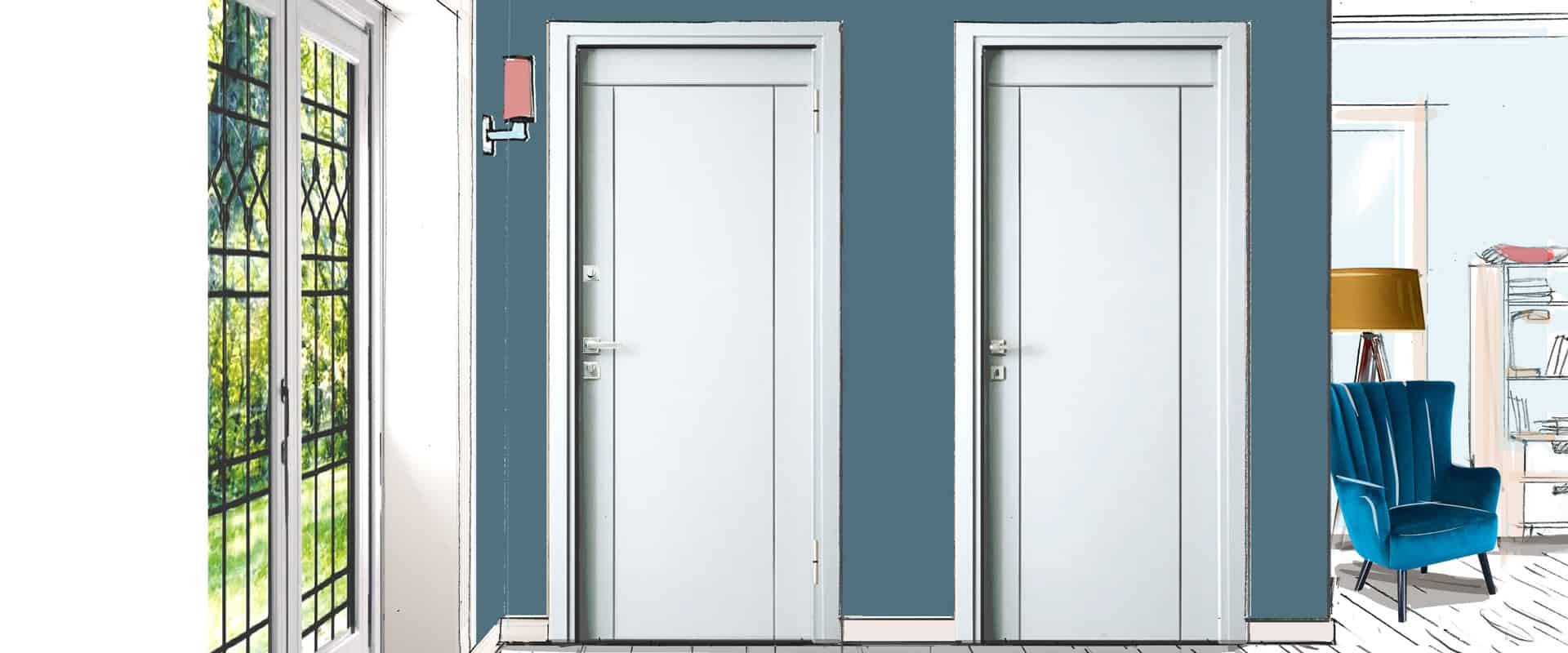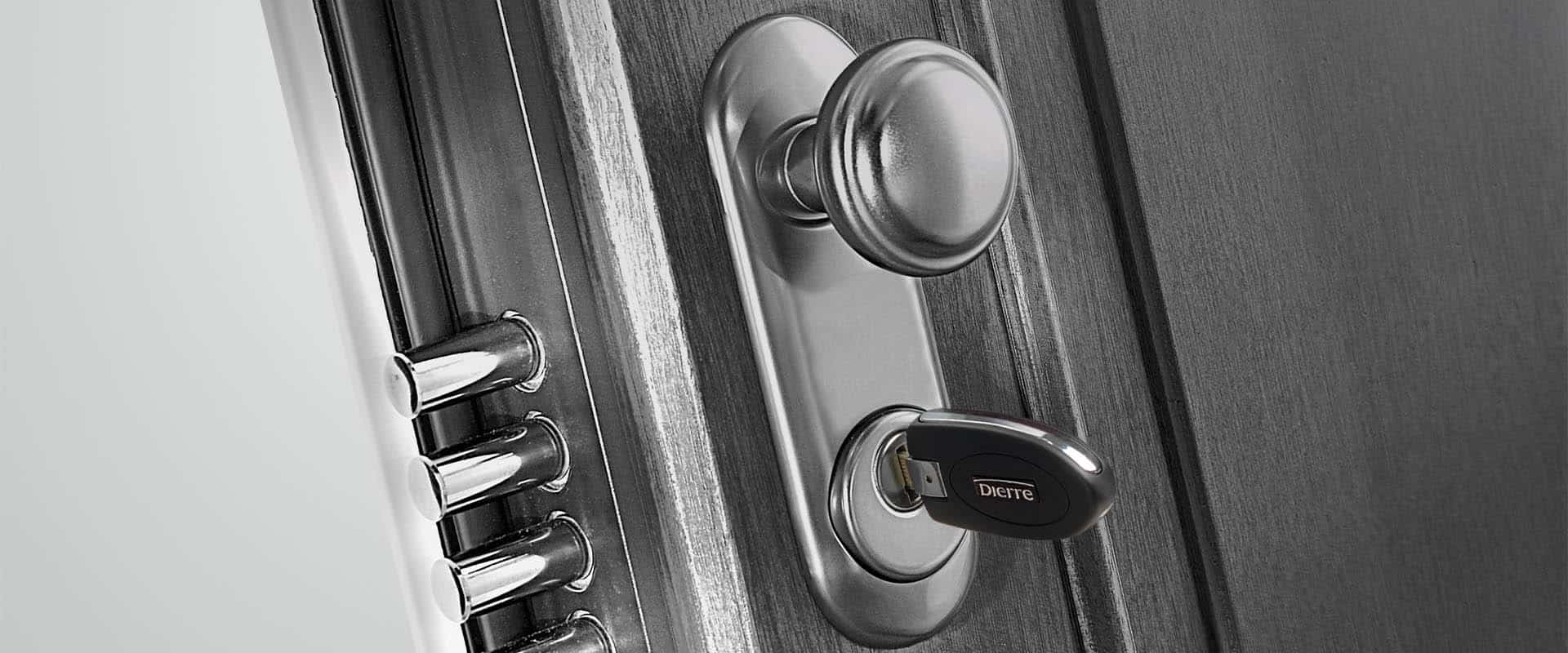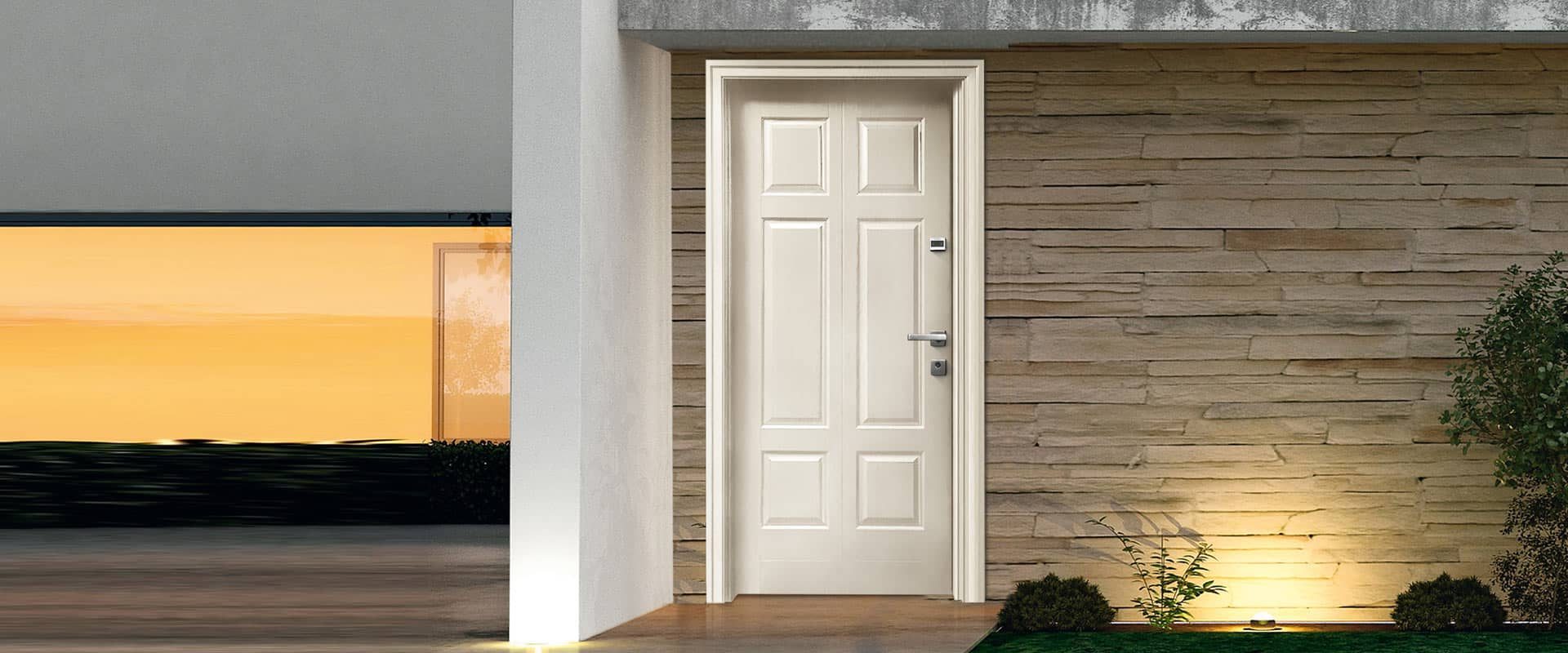Keeping the Cold Out with Heat-Insulated Security Doors
In this article, we will explore how heat-insulated security doors enhance energy efficiency in the home. We will also introduce several models specifically designed to minimize heat loss and prevent condensation.

Here’s what you’ll find:
- What if simply closing the door isn’t enough?
- Insulated Security Doors: Transmittance and Energy Efficiency
- Transmittance: How Well Does Your Security Door Insulate?
- Understanding the Transmittance Value of Your Security Door
- The Pitfalls of “Hidden Transmittance” in Security Doors
- Addressing Condensation Issues with Thermal Windows and Doors
- Dierre’s Thermal Insulated Security Doors
What if simply closing the door isn’t enough?
“Close the door; the cold is coming in!” is a common refrain we hear more frequently as winter approaches. However, it’s more accurate to say that the heat is escaping. Given the soaring energy costs, every moment the door remains open affects your bill. But what if, even when closed, your front door fails to keep the heat from escaping?
Insulated Security Doors: Transmittance and Energy Efficiency
Window and door frames play a crucial role in energy efficiency. They must provide adequate protection while ensuring optimal thermal insulation. This principle applies equally to the security doors that guard our home entrances. A door without proper insulation allows heat to escape, leading to increased energy consumption that may go unnoticed yet is relentless. Therefore, when selecting the front door for your home, it’s essential to consider this aspect.
Here’s how to approach it.
Transmittance: How Well Does Your Security Door Insulate?
Heat is energy that travels through both vacuums and various materials, including walls, floors, fixtures, and window frames—security doors included.
Naturally, heat flows from warmer areas to cooler ones, which means that during cold months, heat escapes, while in warmer months, it enters. This phenomenon compels us to adjust to maintain an ideal temperature in our homes continuously.
Thermal transmittance quantifies the heat that a material allows to pass from a warmer to a colder environment. This measurement is essential for determining a door’s energy efficiency.
Understanding the Transmittance Value of Your Security Door
The thermal transmittance coefficient (Ud) is expressed in W/(m²K), representing Watts per square meter per Kelvin. A higher Ud value indicates lower energy efficiency for the security door. Specifically, more heat can pass through the door per square meter of surface area, reducing thermal insulation effectiveness.
The transmittance value for all windows and doors, including security doors, is listed on the data sheet.
The Pitfalls of “Hidden Transmittance” in Security Doors
Modern security doors typically boast average transmittance values of around 1.5 W/(m²K).
However, there’s an important caveat: this value represents a weighted average of the transmittance for both the door sash and the frame. Since the sash has a significantly larger surface area than the frame, the overall transmittance value is primarily influenced by the sash’s performance.
As a result, even if the frame allows a considerable amount of heat to escape, this inefficiency is often overlooked in the reported transmittance figure. While the door’s insulation capability is highlighted, this discrepancy can lead to undesirable energy efficiency consequences.
Addressing Condensation Issues with Thermal Windows and Doors
One of the challenges arising from the differing insulation capabilities between security doors and their frames is the occurrence of condensation on the frame itself. As homes become increasingly insulated to retain valuable heat, they also become more airtight, reducing air circulation.
This lack of airflow can accumulate moisture in rooms, condensing on cold surfaces—particularly in windows lacking double glazing or exterior door frames.
This condensation can drip, dampen the floor, or damage the surrounding wall, encouraging unsightly damp patches and mold growth.
While technical research has primarily focused on door sashes—due to their larger surface area and higher susceptibility to heat loss—insulating door and window frames have often been an afterthought. Solutions like wooden frame covers, panels, or insulating foams are typically applied post-production.
At Dierre, we have taken a proactive approach to combat condensation on frames by developing and manufacturing thermal frames with transmittance values that match those of our security door leaves.
Dierre’s Thermal Insulated Security Doors
We have created two models of security doors specifically engineered for optimal thermal insulation:
Designed with thermal break frames, these doors offer exceptional strength and achieve a transmittance rating of up to 1.0 W/(m²K), significantly better than the 7 W/(m²K) typical of standard steel frames.
This advancement enhances the security door’s overall insulation performance and minimizes the likelihood of unwanted condensation forming due to extreme temperature differences between the interior and exterior.
Alongside energy efficiency, both models uphold the high-security standards for which Dierre is renowned.
This means that heat remains inside while everything else stays out.
Would you like additional information? Contact us!
Share this article
Back






